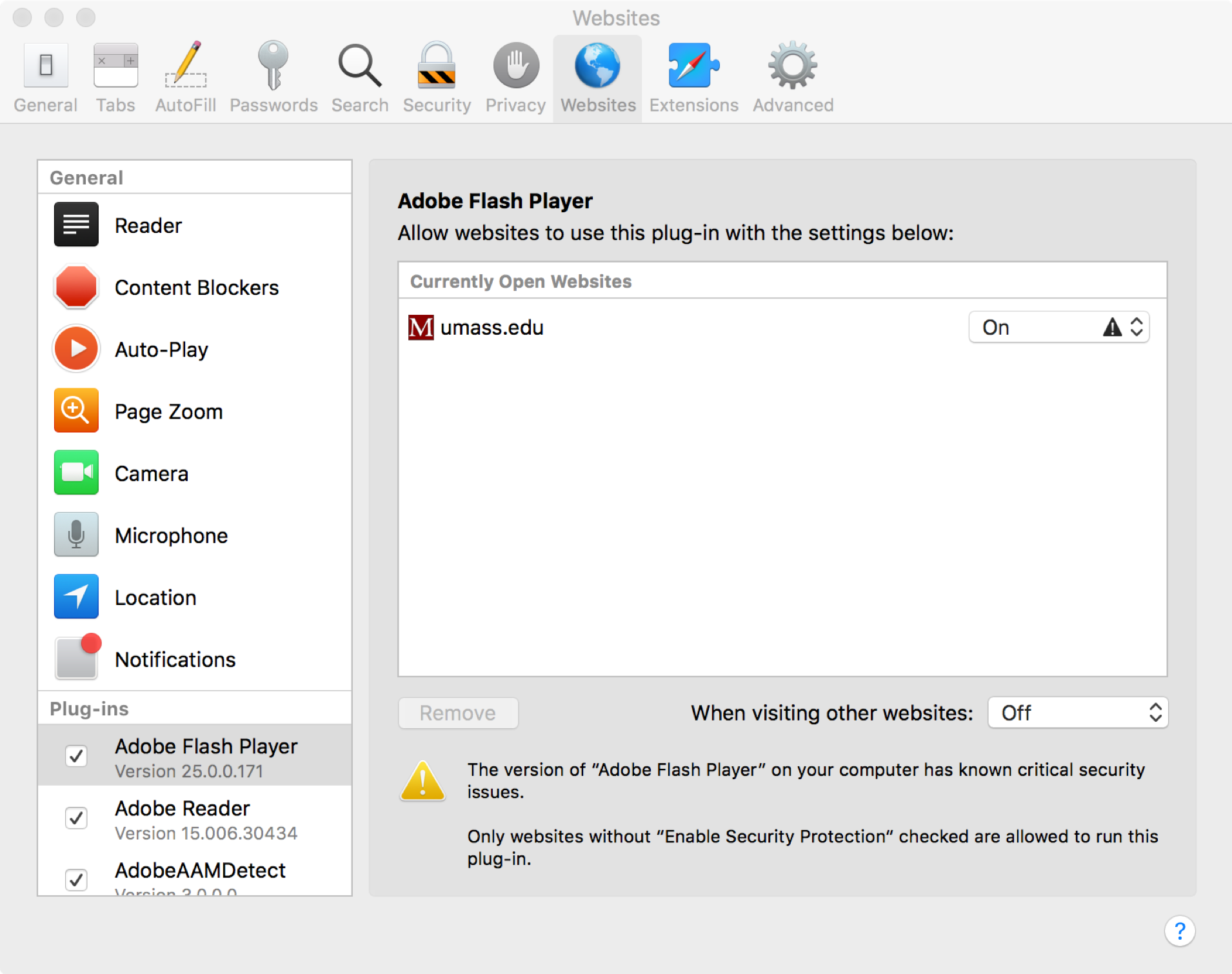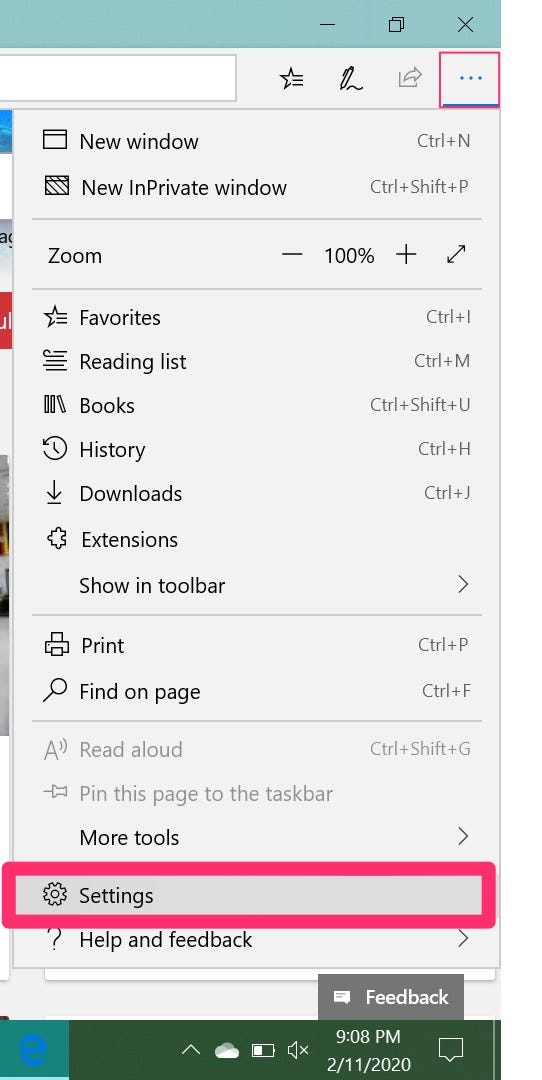Description
Compact WordPress Audio Player plugin is an HTML5 + Flash hybrid based wordpress plugin which can be used to embed an mp3 audio file on your WordPress post or page using a shortcode. The audio player is cute and compact and will play on all major browsers.
This audio player plugin Supports .mp3 and .ogg file formats.
Click on Allow Plug-ins Website Settings to disable Flash in Safari. To uninstall Flash in Safari: Open Safari; Go to Safari Preferences; Click Security; Click Website Settings; Click Allow Plugins; Select Adobe Flash Player from left hand pane; Click Block; Mozilla Firefox. To uninstall Flash in Mozilla Firefox: Open Firefox; Open the browser menu and click Add-ons; Select the Plugins tab; Select Shockwave Flash. Flash Plugin For Windows 10 free download - PDF Reader for Windows 10, Facebook for Windows 10, Adobe Flash Player, and many more programs. Sep 20, 2016 Apple Blocks Out-of-Date Flash Player Plug-ins in Safari Updated Posted on September 20th, 2016 by Derek Erwin Apple has just updated the web plug-in blocking mechanism to disable all Flash Player versions prior to Flash Player 23.0.0.162 and 18.0.0.375, due to security issues identified in the older versions.
Plugin Flash Player Safari Chrome
The audio files that you embed using this plugin will work on all devices.
Features
- The audio player is compact so it does not take a lot of real estate on your webpage
- HTML5 compatible so the audio files embedded with this plugin will play on iOS devices
- Works on all major browsers – IE7, IE8, IE9, Safari, Firefox, Chrome
- The audio player is responsive.
- If you do podcasting then this audio player can be used to embed the audio files on your WordPress posts or pages
- If you are selling audio files from your site then you can use this plugin to offer a preview
- Add the audio player to any post/page using shortcode
- Use autoplay option to play an audio/mp3 file as soon as the page loads
- Ability to specify both the mp3 and ogg version of your audio files. The plugin will play the appropriate one based on the device.
More details can be found on the Compact Audio Player Plugin Page
Usage
Use the following shortcode to embed an audio file anywhere on your site
[sc_embed_player fileurl=”URL OF THE MP3 FILE”]
Example shortcode:
[sc_embed_player fileurl=”http://www.example.com/wp-content/uploads/my-music/mysong.mp3″]
Installation

- Upload the “sc_audio_player.zip” file via the WordPress’s plugin uploader (Plugins -> Add New -> Upload)
- Activate the plugin through the “Plugins” menu in WordPress.
- Create a page or post to show the player using shortcode.
- Add shortcode anywhere in the post/page like: [sc_embed_player fileurl=”mp3 file url”]
FAQ
Will my audio file work in all major browsers?
Yes

Can I loop the audio files embedded using this plugin?
Yes
Plugin Flash Player Safari Download
Will the audio player work on iOS devices?
Yes
Reviews
These instructions are NOT applicable to Flash Player included with Google Chrome. Visit the Flash Player Help page for instructions on enabling (or disabling) Flash Player in various browsers.
If you use Windows, see Uninstall Flash Player | Windows.
If your Flash Player installation was not successful, use the following solution to reinstall.
Click the Apple icon and choose About This Mac.
The Mac OS version appears in the About This Mac dialog.
2. Run the uninstaller applicable to your Mac OS version
- Run the uninstaller on Mac OS X 10.4 and later, including macOS
Note:

Beginning with Flash Player 11.5, uninstalling the Flash Player resets the AutoUpdateDisable and SilentAutoUpdateEnable settings in mms.cfg to their default values:
- AutoUpdateDisable=0
- SilentAutoUpdateEnable=0
If you are running the Flash Player uninstaller as part of your deployment process, redeploy any custom changes to either AutoUpdateDisable or SilentAutoUpdateEnable.
Run the uninstaller on Mac OS X 10.4 and later, including macOS
Download the Adobe Flash Player uninstaller:
- Mac OS X, version 10.6 and later: uninstall_flash_player_osx.dmg
- Mac OS X, version 10.4 and 10.5: uninstall_flash_player_osx.dmg
The uninstaller is downloaded to the Downloads folder of your browser by default.
In Safari, choose Window > Downloads.
If you are using Mac OS X 10.7 (Lion), click the Downloads icon displayed on the browser.
To open the uninstaller, double-click it in the Downloads window.
Note: If the Flash Player installer window does not appear, choose Go > Desktop in the Finder. Scroll down to the Devices section and click Uninstall Flash Player.
To run the uninstaller, double-click the Uninstaller icon in the window. If you see a message asking if you want to open the uninstaller file, click Open.
- Bookmark or print this page so that you can use the rest of these instructions after you close your browser.
To close all browsers, either click the browser name in the Uninstaller dialog, or close each browser manually and then click Retry.
Note: Do not click Quit in the Uninstaller window. It stops the uninstallation process.
After you close the browsers, the uninstaller continues automatically until the uninstallation is complete. When you see the message notifying you that the uninstallation succeeded, click Done.
Delete the following directories:
- <home directory>/Library/Preferences/Macromedia/Flash Player
- <home directory>/Library/Caches/Adobe/Flash Player


Download the Adobe Flash Player uninstaller:
- Mac OS X, version 10.3 and earlier: uninstall_flash_player_osx_10.2.dmg (1.3 MB) (updated 05/27/08)
Choose Window > Downloads to view the downloaded uninstaller.
Save the uninstaller file in a convenient location.
To open the uninstaller, double-click it in the Downloads window.
To run the uninstaller, double-click the Uninstaller icon in the window. If requested, enter your computer user name and password and click OK.
Bookmark or print this page so that you can use the rest of these instructions after you close your browser. Close all browsers and other applications that use Flash Player, including instant messaging applications, SWF files, and projectors (EXE files that play SWF files). Otherwise, the uninstaller cannot finish (even though it appears to finish).
Once the uninstaller finishes, the window closes automatically.
You can verify that uninstallation is complete by following these steps:
Open your browser and check the status of Flash Player.
